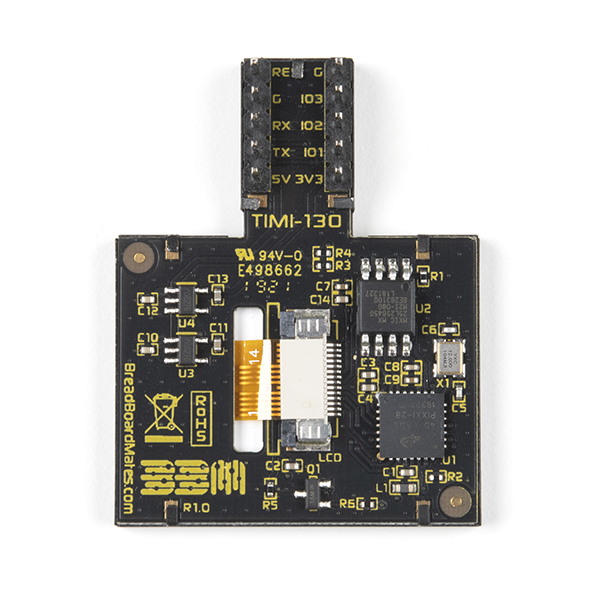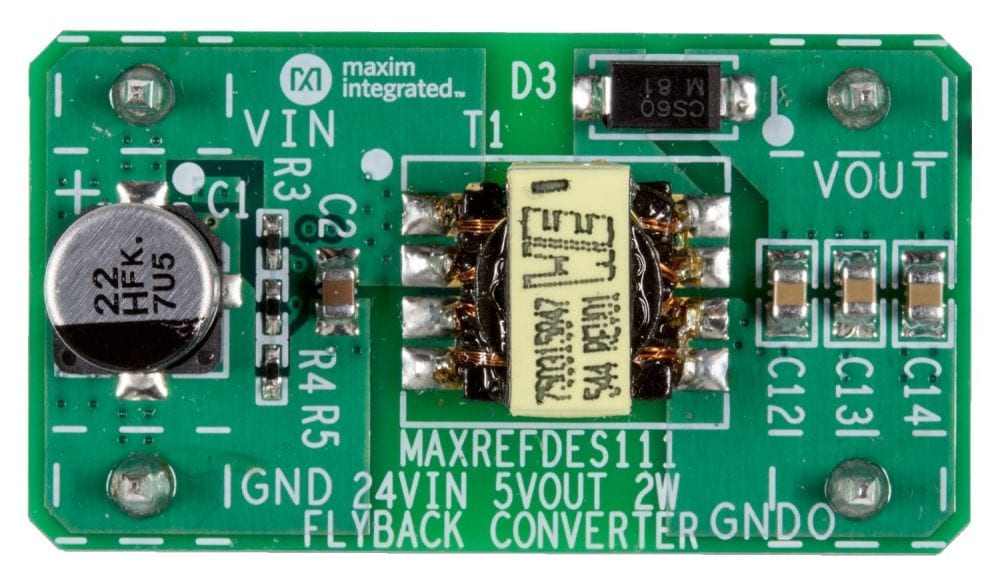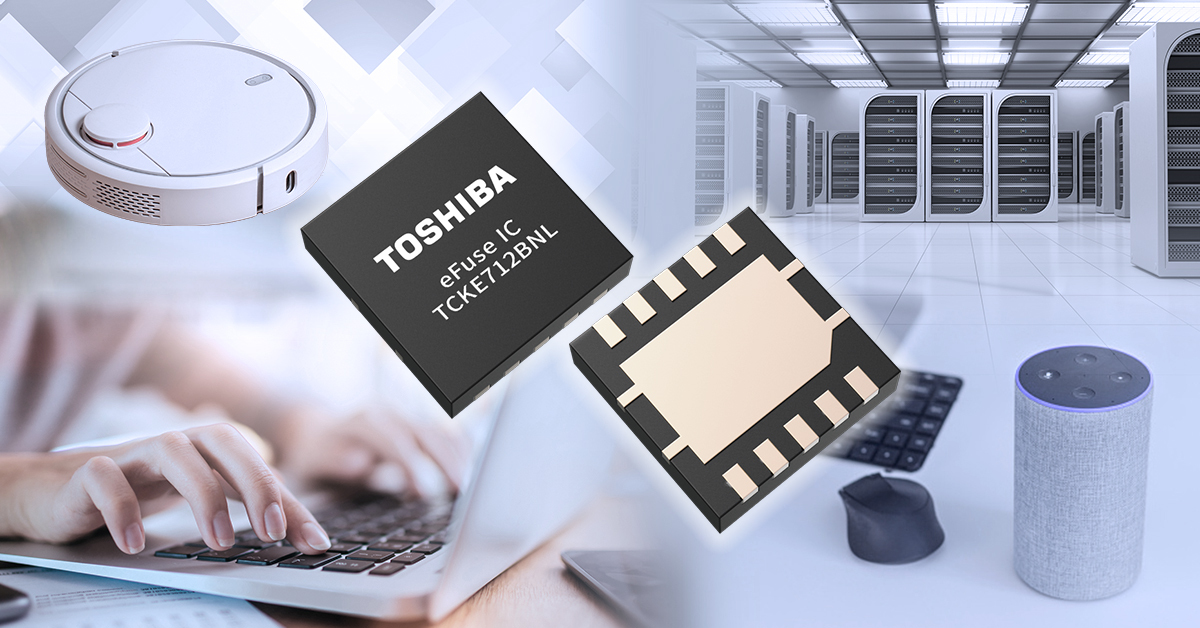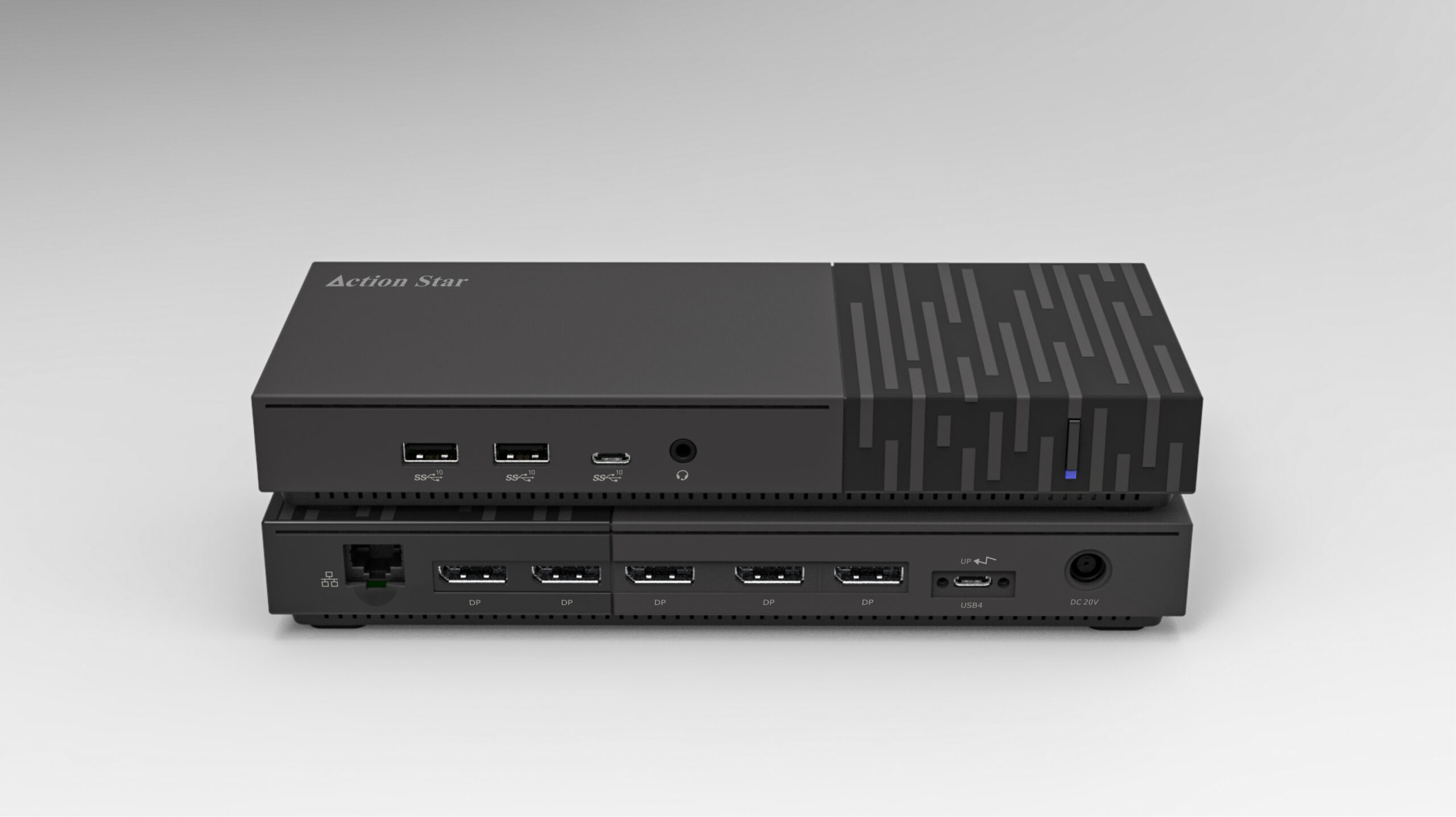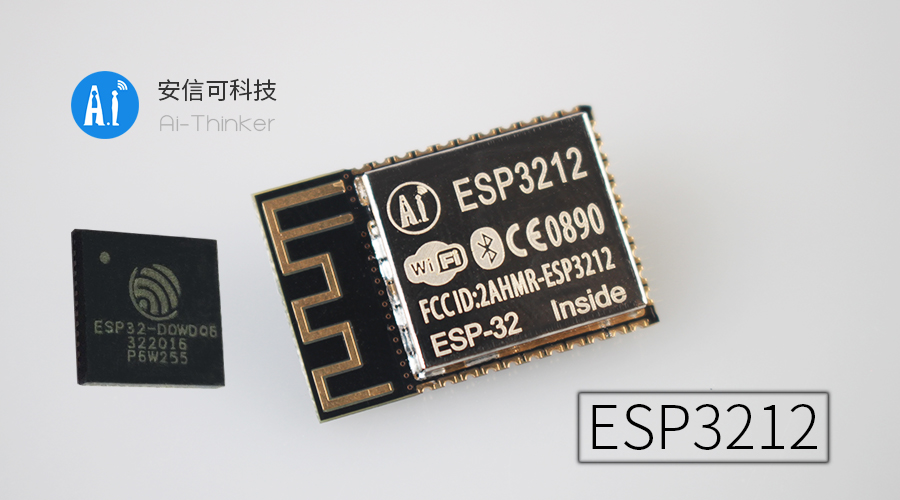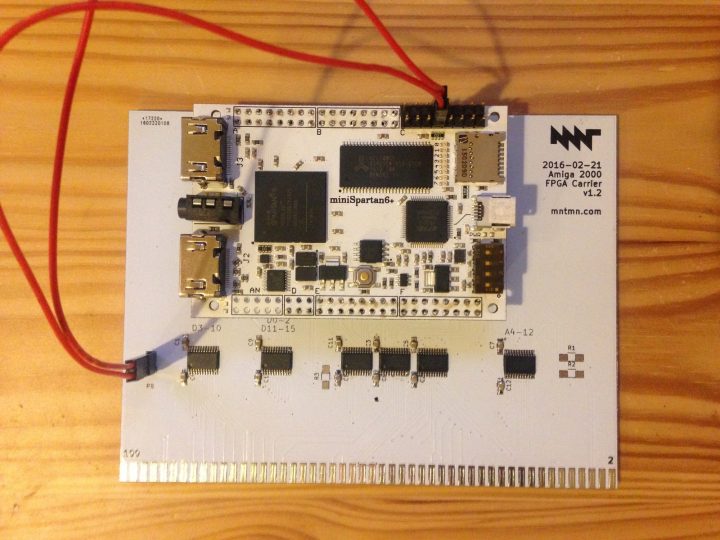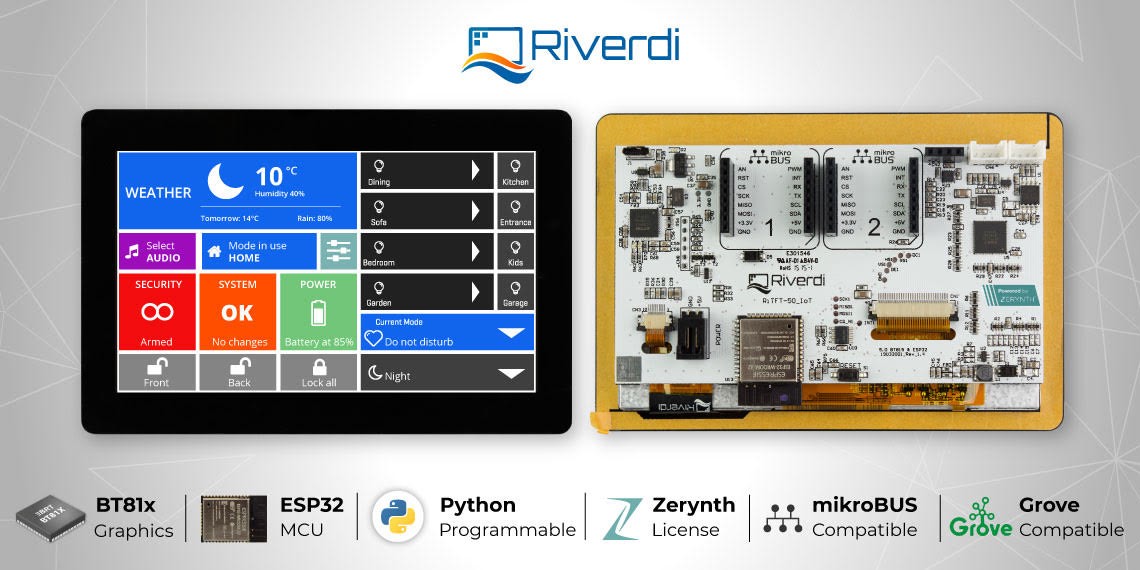
Designed and produced with everything an IoT engineer might need, the python-programmable ESP32– powered IoT display by Riverdi is an expandable, cloud-ready GUI with a sleek design, low power consumption and top of the line graphical capabilities for high-quality IoT projects.
The Riverdi IoT displays comes in 3 different versions – 5″ resistive touch panel, 5″ capacitive touch panel, and 5″ Ux touch panel (with a decorative black or white cover glass) – each of which has great features like 800×480 resolution, SPI interface and 510 cd/m2 brightness. Each display can be programmed without any limitation in Python or C/Python with the Integrated Zerynth license onboard. With about 15 lines of codes, you should be able to connect a sensor to the cloud, thanks to the simplicity of Python and the efficiency of Zerynth toolchain. The Zerynth toolchain offers hardware encryption, multi-threaded applications, firmware over the air updates, advanced power management, Blockchain libraries, among many others.
The system architecture is simplified for human-machine interfaces (HMI) by the Bridgetek graphics controller, BT81x (a part of the family of advanced graphics controllers) or EVE3 on the Riverdi IoT display which is responsible for the audio, display and touch functionalities including an object-oriented architectural approach that goes from creating display to rendering graphics.
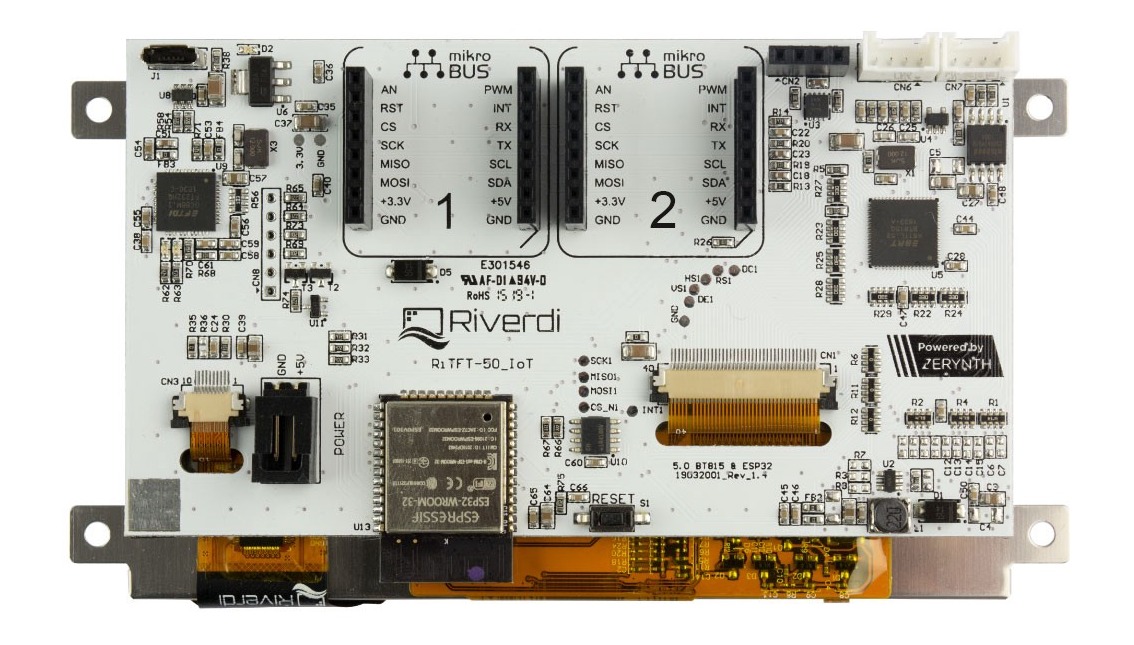
Every IoT display has two Grove connectors and two MicroBUS sockets that offer a simple and easy way to expand the display through many SeedStudio Twigs and MikroElektronical Click Boards. On each click board and Twig, you can choose any functionality that you want to be added to your display: temperature and humidity sensors, text to speech converters, UV sensors, voltage regulators, RF transceivers, buttons, switches, and motor control. In no time, you’d have your customized IoT project in your hands.
Also, the Espressif ESP32, ideal for low power IoT applications and wearable electronics, is located on these IoT display. The ESP32 integrates WiFi and Bluetooth so you can connect your display to the cloud as well as send and receive data via the cloud. The ESP32 combines the WiFi (that ensures your module can directly connect to the internet), the Bluetooth (that allows you to connect a smartphone) and the Bluetooth low energy (to broadcast low energy beacons for detection).
Learn more about the different versions of the displays on Riverdi IoT display category page. In case you are not so skilled with programming in python, visit the Zerynth Academy for its many tutorials and articles on python.





